I found the No Kings March in Los Angeles last weekend to be a lovely affair.
There were of course currents of fury and disgust running through the crowd, but these were not the most dominant feeling. Instead, the general atmosphere was closer to an almost intoxicating mix of celebration and resolve. Those fools in Washington may be doing their best to destroy things, one felt, being there in the street, but in the end they are ignorant and wrong. Ignorant because they are so terribly unaware of the value of what they’re attacking, and wrong because they think they’re going to succeed.
As my wife and I marched, her carrying a bouquet of flowers and me carrying an American flag, it occurred to me that the two places I had felt energy like that was being in a crowd leaving the stadium after your team has trounced the other, and being in a crowd after a musician has played their heart out on stage for you.
The whole variety of American life was on display. Young and old and babies and grandparents, white folks and black folks and brown folks, well-off and working class. The homeless population in that part of town sat watching; I do not know what they thought.
The Californians who signed up for the National Guard out of patriotism or to fund their college education or because they didn't know what else to do with their lives and now found themselves in the street wearing battle gear and watching a lively parade of their fellow citizens seemed somewhat befuddled. Folks chatted with them and gave them water. One guy waving a flag dapped them up as he walked by, a gentle fist-to-fist salute. Each National Guardsman returned the gesture.
There were American flags flying, and there were Mexican flags, and there were flags of the two countries sewn together. There were witty signs, most of them expressing scorn for The Man Who Would Be Jefe, but Stephen Miller and Elon Musk caught some shrapnel as well, and lots of folks wanted to note that ICE is fine for drinks of one kind or another, but other than that we have no need for it.
Several families had parked their cars at the curb and were handing out water and snacks, and there was band consisting of brass and strings, and a native American dance troupe, and we marched and chanted and waved our flags and it was only after we had taken the bus back home that I began to wonder something.
What, exactly, were we insisting must be defended?
It’s bothersome questions like this that become vital in times of emergency, I am finding, because of the terrible difficulty of action.
I do not mean that going into the street is difficult. Nor is writing a few paragraphs in favor of democracy and freedom, or mocking The Man Who Would Be Jefe to keep our spirits up, or calling our Senators and Representatives, or any of the other activities in which many of us are engaged.
What’s difficult is the act of continuing to believe and care over the long term.
The onslaught can be so monumental – from the geopolitical cock-ups like Trump's declaration that it may take him two weeks to decide whether to take military action against Iran and then bombing them 48 hours later and claiming absolute and total victory just before the news came in that the entire strike may have set back Iran’s ability to build a nuclear weapon by a whopping three months, to the terrifying human stories of people kidnapped off the street to satisfy a quota invented by a regime maddened by racial hatred, to the smaller, innumerable insults like the recent news that a judge in Florida was simultaneously hearing a case involving Trump and lobbying Trump for a seat on the federal bench (spoiler: he decided in Trump's favor and was then nominated for the seat) – this onslaught can be so monumental that the effort of not letting it bury you is immense.
The numbers are so great, the stories so multitudinous that they threaten to numb.
The soul rebels in quiet horror. The mind wants to retreat to some safer place.
The bad news is that there is no safe place. This is the moment in which we have found ourselves.
The good news is that what you are fighting for has an actual, tangible history, and exists around you in virtually every moment of every day.
So if you need reinforcement, look around.
What you will see is that difference and democracy and freedom – these things being attacked by the President and his cohorts – are not abstract ideas from dusty old documents, but the constituent elements of American existence.
We are a heterogeneous, polyglot, riotous, cantankerous nation from top to bottom, a nation so invisibly interconnected that, to use Whitman’s impossibly hopeful phrase, “every atom belonging to me as good belongs to you.”
Obviously, this doesn’t mean that our power, wealth, and opportunity have been shared along equal lines. But our composite nature, our connection through disconnection, as it were, does constitute such a definitional role in who we are that an attack on difference – along any lines of race, gender, sexuality, national origin, creed, etc. – in this country is in fact an attack on American culture itself.
This may at first seem like a bizarre assertion, but to make it concrete, we might think about the example of…rock and roll.
Yes, rock and roll. This music is (along with jazz and hip-hop, of course) among the most purely American contributions to world culture, so much so that it is difficult to think of a more genuinely national art form.
But what is rock and roll? And what the hell does it have to do with marching in the streets of Los Angeles on a Sunday in June?
Consider Chuck Berry.
Berry, who is as responsible as anyone for creating the foundational tone and swagger of the music, with his driving, aggressive guitar style and famed frontman showmanship, had his first big hit with "Maybellene" in 1955.
This song was an adaptation of "Ida Red," a traditional American folk tune favored by Country and Western artists. Berry broke through with it because while he had grown up playing the blues, he had also found something appealing in the Country music tradition, enough so that at one point his own (black) fans were referring to him as “that black hillbilly.”
In other words, when one begins to trace the origins of rock and roll, one immediately finds an art form with roots in music brought from West Africa by slaves and filtered up through the jazz developed in places like the brothels of New Orleans (which carried, in turn, the influences of Caribbean, Spanish, and Cajun (which is French by way of Nova Scotia) cultures) mixed with the Appalachian-style folk music created by rural people whose ancestors had come over from Scotland and Ireland.
Added into this is, of course, the long-running influence on the form by what we might think of as black gospel music (Berry's father was a deacon in a Baptist church). But what is this music, in turn? An evolution of the spiritual expression of slaves and the descendants of slaves who had adopted or been forced into a framework of belief brought to this continent by religious Puritans from England by way of Holland, who were themselves reacting to and adapting an ancient religion founded in the Middle East and then based in Italy, as reformed by a guy (Martin Luther) from Germany who became the figurehead of a series of religious conflicts that took place all over Europe.
All of which is to say that this astounding mixture of culture influence and expression is one of the defining features of rock and roll, and exactly what makes it so deeply American. At its core, our music is a product of the relentless expansion (and at times destruction) of cultural boundaries.
Diversity is too small and constricted a word for this, but it is the word we have.
And what thinking about rock and roll – or virtually any element of the art and music that surrounds us on a daily basis – makes clear is that what we are gesturing at when we use this word “diversity” is the fact that there is no American culture without heterogeneity.
If you doubt this, you might consider the fact that difference does not simply constitute the wellsprings of American culture – it is the central topic of a great deal of that culture.
In part, this comes from our status as a nation into which successive waves of very different peoples from very different cultures found themselves incorporated, sometimes by force, sometimes by choice, and sometimes by necessity (if that is the word for Cuban refugees who came here after the revolution there, or the so-called Vietnamese "boat people" who fled here after the U.S.-instigated war in that country, or the Ukrainians who have arrived more recently because of the Russian invasion of their country).
We are a nation of incorporation, and, yes, it makes sense that a nation composed in this way would have an art in which the confrontation of difference plays a central role.
But this role is also due to our political system.
One of the fundamental notions of democracy is one so exceedingly strange that at first it makes no sense: all of these people, with all of these different points of view, and all of these different cultural backgrounds, are supposed to make decisions about their own self-determination through a process involving no force other than that of words and ideas?
As is commonly said, it may be a terrible, and terribly naive, idea, but it’s better than all the rest.
What democracy gives us in practice is a politics that it is very, very difficult. And in part because of that difficulty, a vast number of the stories we tell as a culture don’t just come from various cultural places, they are about the collisions of cultures, of worlds, of desires, of rights, and of experiences.
So we have Huckleberry Finn, about a white boy and a black man riding a raft together down the Mississippi river. We have Invisible Man, about a black man's attempt to interface into the larger society, both black and white, around him. We have Guess Who's Coming To Dinner, The Shawshank Redemption, Lethal Weapon and The Green Book, along with innumerable other films in which the confrontation of white and black is an inextricable strand. We have The Godfather, which lays out the legacy of the collision of capitalistic ideals and the treatment of Italian immigrants beginning a hundred years ago and Interior Chinatown, which deals with our long history – both on the screen and in our communities – of treatment of Asian Americans, and Chinese immigrants in particular.
We have the entire fraught tradition of the Western film, which manages to encapsulate a good deal of the cultural attitudes towards the collision of European expansion on this continent with the Indigenous populations that occupied it. We have the tradition of conflict between rich and poor as explored in everything from The Great Gatsby and Depression-era films to Wall St. and The Mountainhead, and of the collision between the rights and desires of woman and the strictures imposed on them by men as expressed in everything from Cukor’s The Women to A Woman Under the Influence to Little Women.
A homogeneous, monarchical culture of the kind envisioned by the MAGA movement does not produce this kind of art.
A culture like they one they want to force onto us neither generates nor responds to Moby Dick (about a madman leading a ship of men of every race and creed on a chase for an almost mythological and perhaps impossible triumph) or the cantina scene in Star Wars.
We are heterogeneous through and through.
This is our definition.
It has shaped virtually everything around us, and because of this it is the topic with which our art and culture is the most obsessed.
When one acts in the current moment, one is acting not simply to try to aid other human beings who are being kidnapped by masked men in the street, or to preserve the integrity of our elections, or to defend our basic civic freedoms.
One is also acting to maintain the living cultural fabric that surrounds us.
There are actual, non-imaginary, in-the-world-existences – people with lives and families woven into a matrix of books and movies and thought and traditions; innumerable tiny strands of story and music and art, of food and street names and architecture, of history and progress and the suffering that has gone into them – that stand behind those great words like "democracy" or "freedom" or "equality."
And because of this, as anyone living in LA understands, the current "debate" about immigration has nothing to do with actual policy.
There are many real debates to be had about immigration and all the other norms and laws in our country, but these debates, in a rational society, would revolve around balancing questions of numbers and humanity, around considerations of legality and rights and the Constitution, and would be voted on by representatives of the people who actually took their jobs seriously.
When you have, instead, masked men yanking people off the street into vans and disappearing them;–
When you have a President declaring that because of an invented "emergency" he can deploy the U.S. military to the streets of Los Angeles;–
When you have a rich guy high on ketamine doubling down again and again on some boast he made on Twitter about being able to cut trillions of dollars out of the U.S. budget when he was, yes, high on ketamine one night, and in the process crippling entire sections of the U.S. government that he does not and cannot comprehend;–
When you have so-called political "thinkers" declaring that the entire government should be run by one person who, they claim, is divinely anointed by the big Christian floaty guy scowling down on all of us heathens;–
When you have politicians voting on something with the batshit crazy name the “One Big Beautiful Bill Act” who have neither read nor understand it;–
When you have all of this instead of actual governance, and actual freedom, and actual democracy, what you are facing is an attempt to shift not just who controls America, but what America is.
If you have any doubt about the threat, go look at the art and culture created by the kind of totalitarian societies that the Man Who Would Be Jefe and his pals are trying to turn America into a facsimile of.
Is there great art created in societies in which power is radically centralized and dissent is forcefully repressed? Of course.
But what, inevitably, is the central topic of that art?
The horror of living in those societies. The dehumanization of the people living there. The desire to return to a society like the one we now occupy, which is now under threat.
Avoiding this fate, at least in the humble opinion of this denizen of the world of American arts, is one of the things we're fighting to avoid.

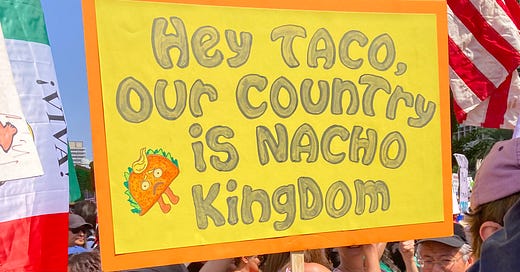


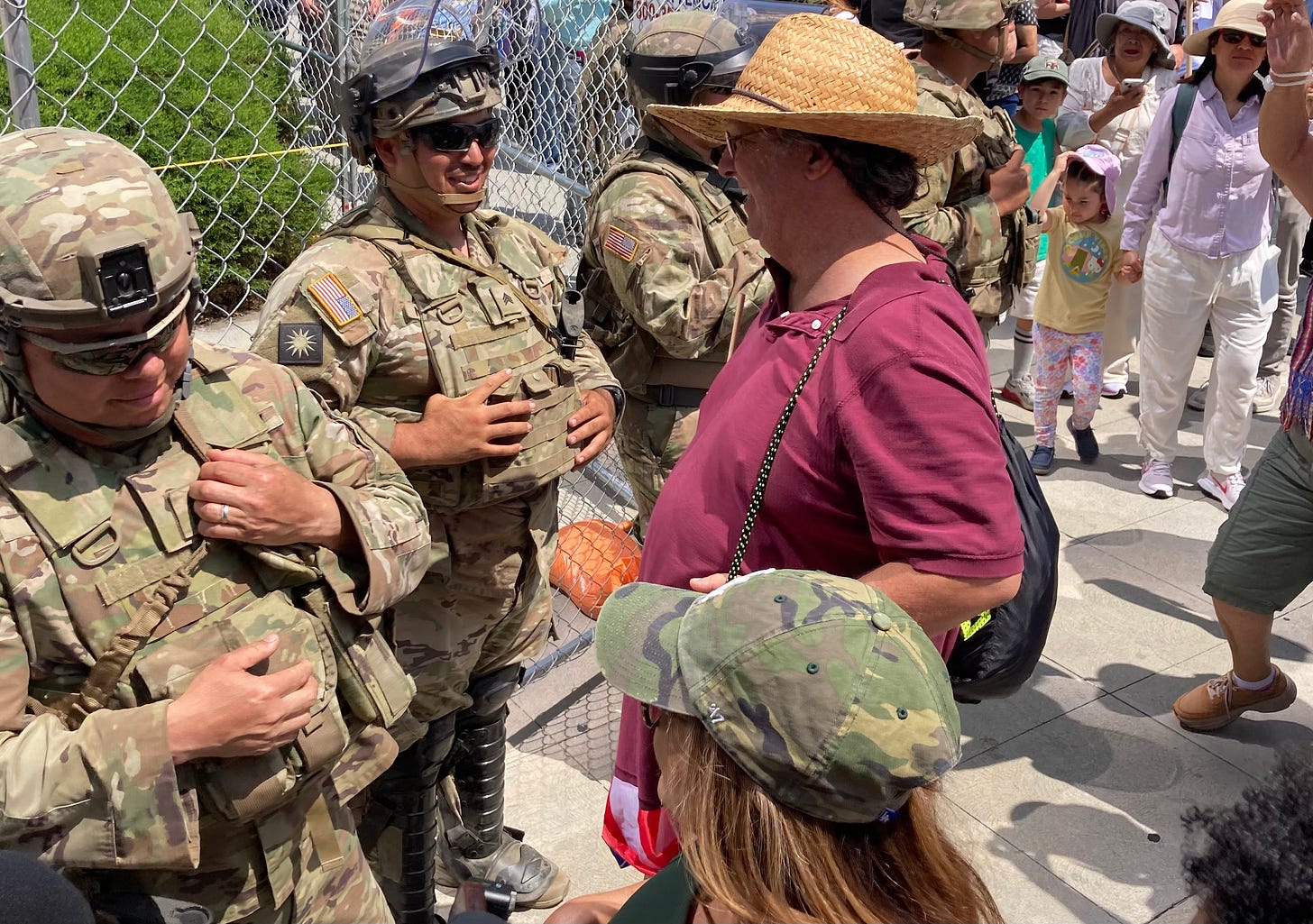

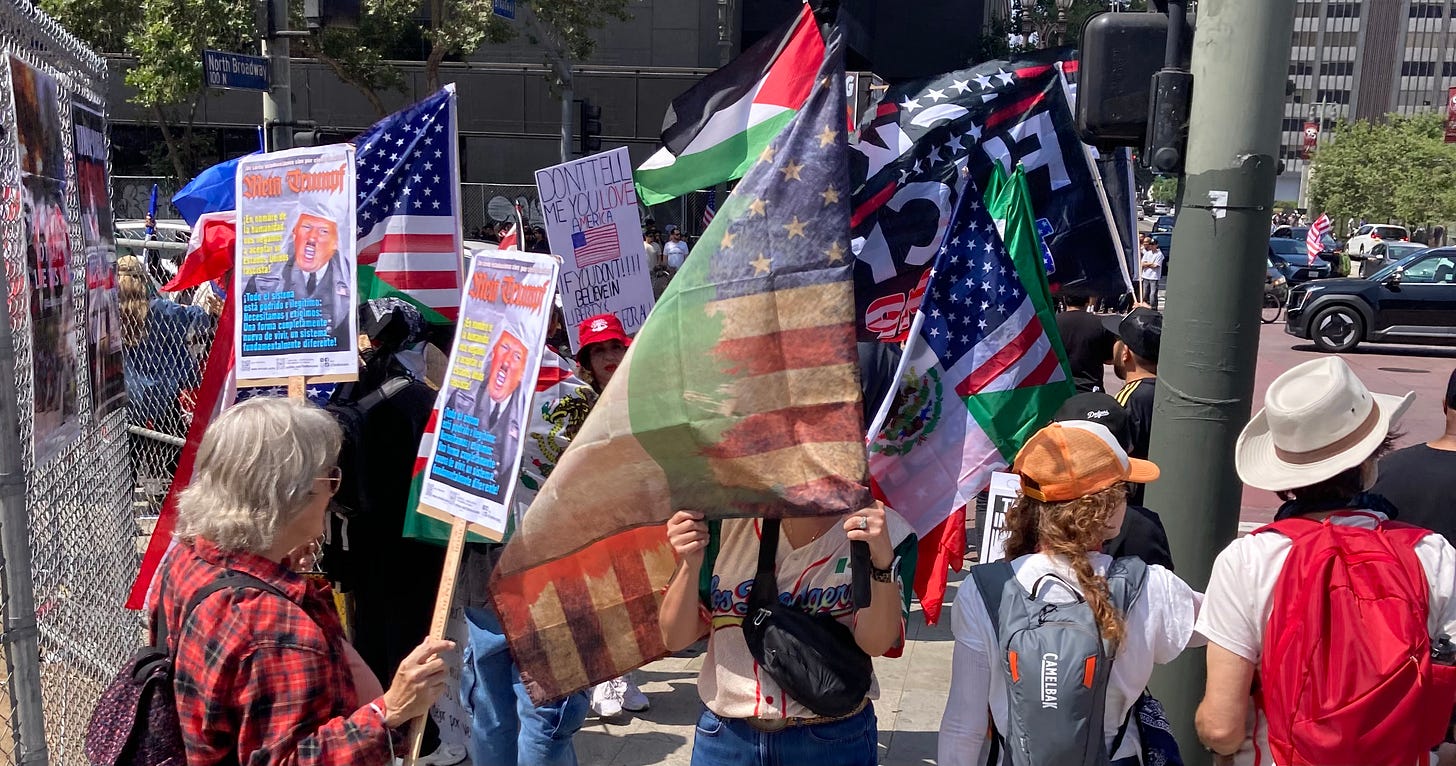
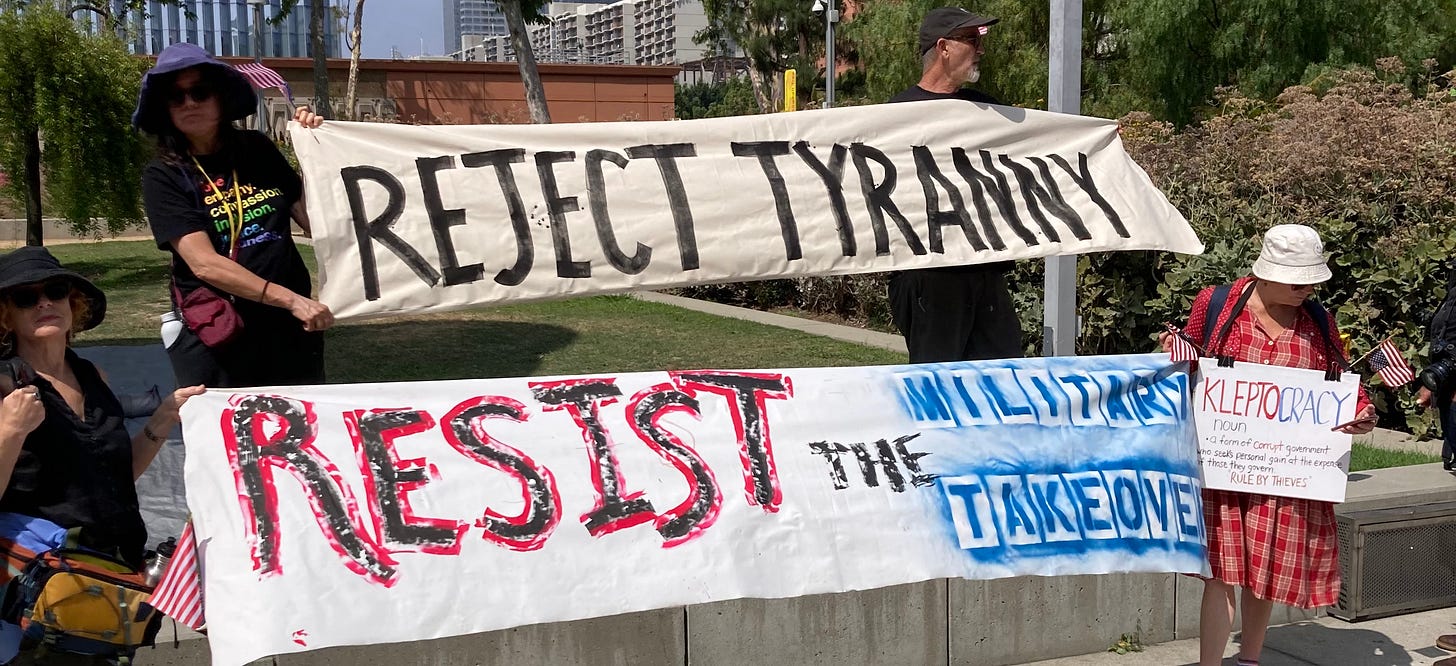
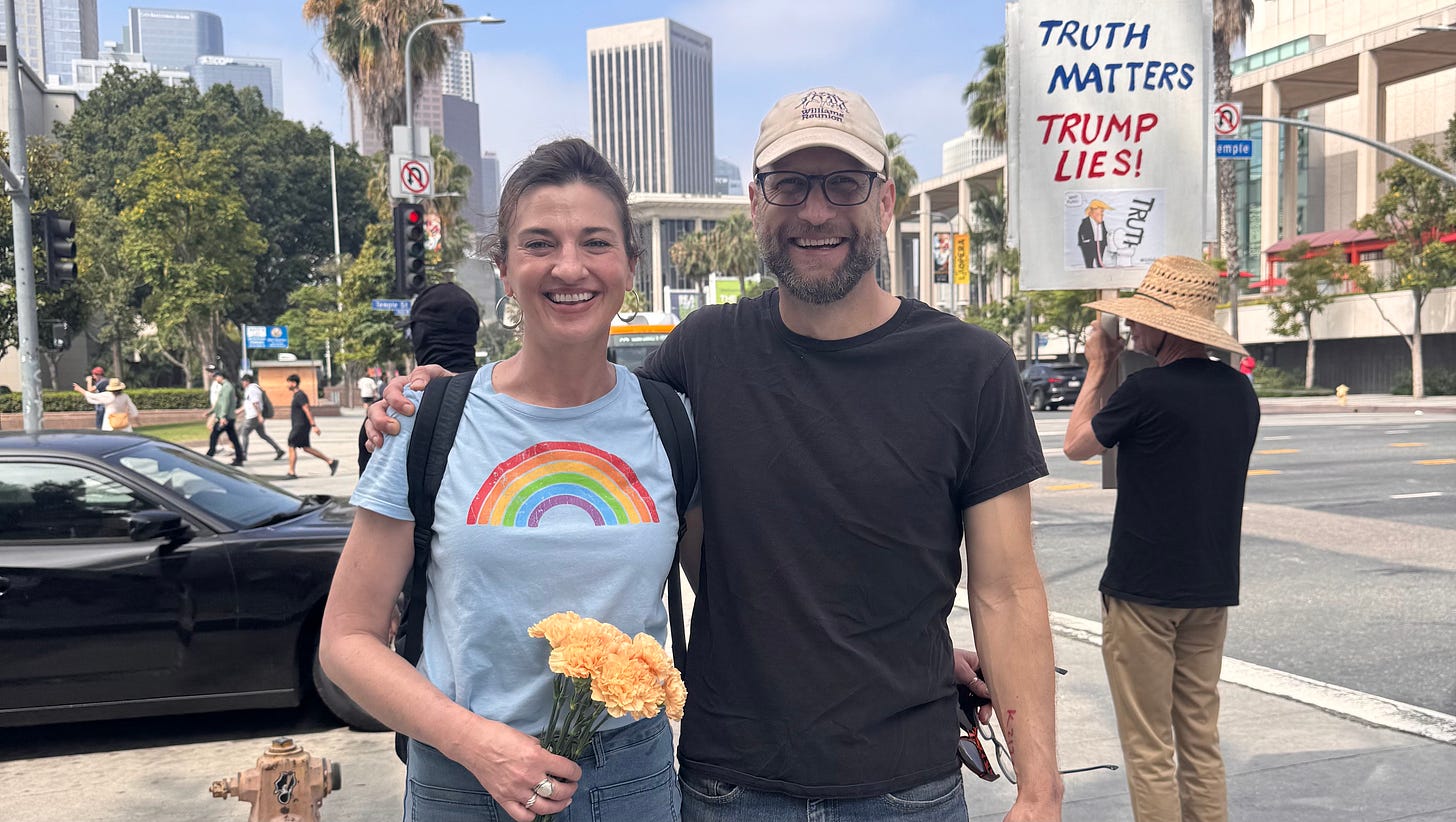
“…acting to maintain the living cultural fabric that surrounds us.”
Thank you Tyler Sage
What a sympathetic, artful, historical analysis in our time of dissention. Aren't we humans inexorably ruled by our conflicted natures! Here we are: desperate to convert other humans into our personal circle of beliefs and actions and traditions, and yet we are also beautifully and immeasurably enhanced by diversity in all its forms. How do we understand, combine and reconcile these seemingly opposed human needs in our persons and our culture? One greatness of the US, as you point out, is that this country of ours may have come as close as any to doing that.